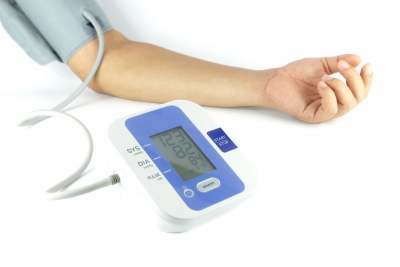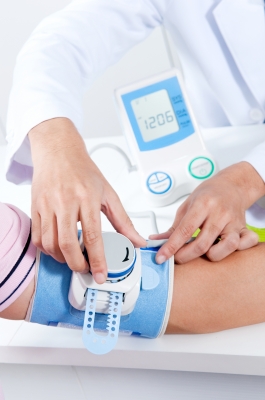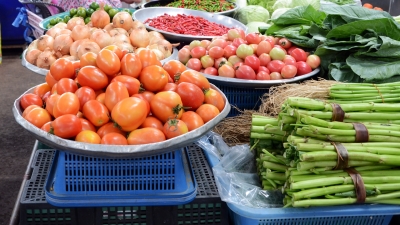Aggressively lower blood pressure to reduce heart disease risk 33%

One out of three U.S. adults, 33 percent, have high blood pressure. This equals around 70 million Americans.
About 65 percent over the age of 60 have high blood pressure.
High blood pressure increases your risk for heart disease and stroke. These are two leading causes of death in the U.S.
What is high blood pressure?
High blood pressure is defined as having a blood pressure at or above 140/90 mm Hg.
140 (top number) is your systolic reading.
90 (bottom number) is your diastolic reading.
Current guidelines for treating high blood pressure are to lower systolic blood pressure to below 140 mg Hg and below 130 mm Hg for adults with kidney disease or diabetes. The most commonly prescribed treatment is blood pressure medication, which can be effective, but includes potential side effects.
Would the benefits of lower blood pressure guidelines outweigh the cons associated with more aggressive treatment and higher medication dosage?
The Systolic Blood Pressure Intervention Trial (SPRINT) began in the fall of 2009, including 9300 participants 50 years of age or older. It is worth noting 28% of participants were over the age of 75. SPRINT is the first study to investigate the impact of maintaining a systolic blood pressure at a lower level than current guidelines and the impact on cardiovascular and kidney disease.
SPRINT investigators divided participants into two groups.
Dining Out and High Blood Pressure
 Did you know dining out increases your risk for high blood pressure?
Did you know dining out increases your risk for high blood pressure?
Why?
Restaurant foods, whether it be a sit down meal or drive-thru, are typically high in both salt and fat.
A study published in the American Journal of Hypertension is the first to show a direct connection between dining out and high blood pressure.
Up to this point, studies have linked dining out to a higher intake of calories, salt, and saturated fat…all of which are linked to high blood pressure.
Researchers focused on young adults. High blood pressure earlier in life has been associated with future high blood pressure and heart disease risks. Researchers wanted to determine the impact of lifestyle factors on prehypertension and hypertension in young adults.
Prehypertension is defined as a systolic blood pressure between 120-139mm Hg and/or a diastolic blood pressure between 80-89mm Hg. Hypertension — another term for high blood pressure – is defined as a systolic blood pressure greater than or equal to 140mm Hg and/or a diastolic blood pressure greater than or equal to 90mm Hg.
Please note the “and/or” used above. Both numbers do not have to be elevated to be diagnosed with prehypertension or hypertension. If systolic alone is high, that can lead to a diagnosis. If diastolic alone is high the same applies.
Continue reading
Farmers Markets to Lower Blood Pressure with the DASH Diet

This Dietary Approaches to Stop Hypertension (DASH) diet is recommend to manage high blood pressure. This diet is rich in fruits and vegetables. You need to consume between three to five servings of vegetables daily and between four to five fruits daily. That likely sounds overwhelming, but it can be effective in your efforts to lower blood pressure.
One vegetables serving is equal to 1 cup raw leafy green vegetable, ½ cup cut-up raw or cooked vegetables, or ½ cup vegetable juice.
One fruit serving is equal to 1 medium fruit, ¼ cup dried fruit, ½ cup fresh, frozen, or canned fruit, or ½ cup 100% fruit juice.
It’s the perfect time of year to adopt the DASH diet if you are struggling with high blood pressure. Many varieties of produce are in season and farmers markets are readily available.
3 Benefits of Shopping at Farmers Markets
- Farmers markets are environmentally friendly. The food is produced and sold locally, while food in grocery stores travels an average of 1500 miles before it reaches your plate.
- Produce grown for farmers markets is typically allowed to fully ripen naturally before it is harvested. Nothing is used to speed up the ripening process.
- The produce purchased at a farmers market comes straight from the garden. No processing. This equals fresh and nutrient rich food.
Tips for Shopping at Farmers Markets
Shopping at a farmers market is not the same as going to the grocery store.
Continue reading
High Blood Pressure: What You Need to Know
 Blood pressure is the force exerted against your artery walls. A blood pressure reading is comprised of two numbers. The top number is the systolic pressure, which represents the force against artery walls when the heart beats and sends blood throughout the body. The bottom number is the diastolic pressure, which is the force against artery walls in between heart beats, or another way to state this, when the heart is at rest and filling with blood.
Blood pressure is the force exerted against your artery walls. A blood pressure reading is comprised of two numbers. The top number is the systolic pressure, which represents the force against artery walls when the heart beats and sends blood throughout the body. The bottom number is the diastolic pressure, which is the force against artery walls in between heart beats, or another way to state this, when the heart is at rest and filling with blood.
High blood pressure, also referred to as hypertension, increases your risk for heart disease, kidney disease, stroke, and eye damage.
A normal blood pressure reading is less than 120 (top number) and less than 80 (bottom number). Prehypertension, meaning you are at risk for high blood pressure, is a range between 120-139 and 80-89. High blood pressure is a ready greater than 140 and 90.
What causes high blood pressure?
How to Find the Right Blood Pressure Monitor
 Blood pressure should be checked every two years after the age of 21, annual checks after age 50, more frequent checks if you have risk factors. It is easiest to treat high blood pressure if you catch the gradual increase early on. If you have a family history of heart disease or stroke, all the more reason to pay attention.
Blood pressure should be checked every two years after the age of 21, annual checks after age 50, more frequent checks if you have risk factors. It is easiest to treat high blood pressure if you catch the gradual increase early on. If you have a family history of heart disease or stroke, all the more reason to pay attention.
Home Monitoring Blood Pressure
If you are diagnosed with high blood pressure, it is wise to monitor your blood pressure at home, as well as your doctor’s office. Combining your readings with your doctor’s will provide a better measure of your high blood pressure and treatment to control it.
Also, home monitoring will rule out if you suffer from “white coat hypertension”. About 30% of individuals diagnosed with hypertension, have “white coat hypertension”. In other words, their blood pressure is elevated due to increased anxiety when visiting the doctor. The only way to know the effects on your blood pressure is to monitor it regularly. For the most accurate results, monitor your blood pressure at the same time every day.
DO NOT substitute home monitoring in place of regular MD checkups. Your MD appointments are very important, especially if your high blood pressure is being treated with medication.
Continue reading
Do you need to cut back on salt to lower blood pressure?

Do you need to worry about how much salt you consume in your diet? It has been argued that only those who are “salt sensitive” need to be concerned about decreasing sodium/salt intake to lower blood pressure.
A study published online in Circulation researched how a high sodium diet may lead to hypertension. The study followed over 5000 participants from the Dutch PREVEND study for close to six and a half years. All participants did not have high blood pressure when the study began.
Researchers found high sodium intake to increase serum uric acid and urine albumin excretion. Increases in serum uric acid and urine albumin are two markers of endothelial dysfunction. The endothelium is the inner lining of blood vessels and a dysfunction is an imbalance of the substances that act on the endothelium leading to vasodilation and vasoconstriction.
As serum uric acid secretion increases, risk of developing hypertension increases. Researches found the same to occur as urinary albumin levels increased. The increased risk of hypertension with increased levels of sodium intake was only seen in participants with markers of endothelial dysfunction.
Studies have shown that consuming high levels of sodium for short periods of time to be associated with endothelial dysfunction. Researchers believe that repeat incidences of high sodium intake in the long term may explain rises in blood pressure connected to high sodium diets.
Continue reading




